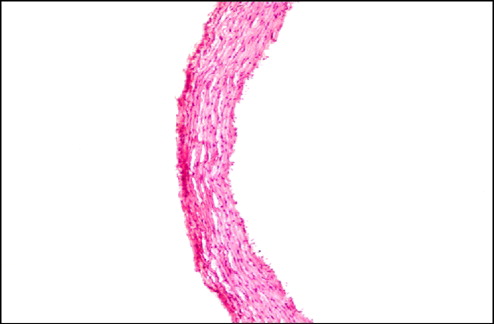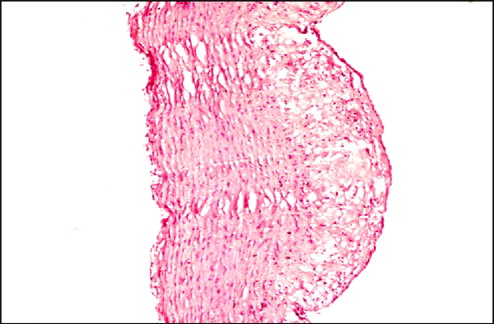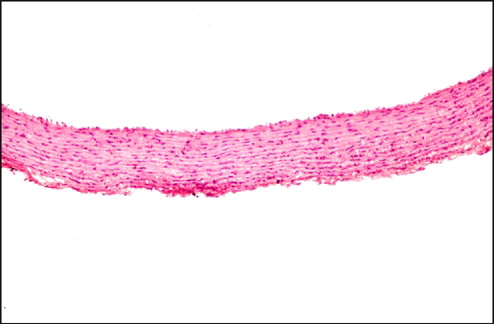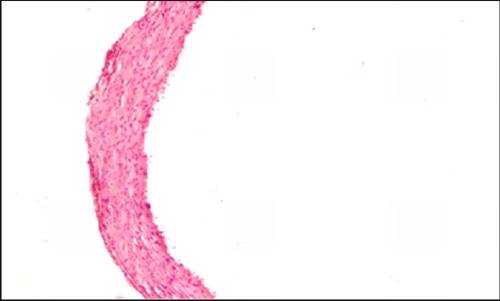Abstract
The fruit alcohol extract of the plant Capparis decidua (Frosk.).. Edgew was investigated for its antiatherosclerotic activity. Hyperlipidemia was induced by atherodiet and cholesterol feeding to animals. Rabbits were fed Capparis decidua. (500 mg/kg body weight) or pitavastatin (0.2 mg/kg body weight) in distilled water along with standard laboratory diet and atherodiet for 60 days. C. decidua. fruit extract and pitavastatin were found to lower serum cholesterol, LDL-cholesterol, triglyceride, phospholipid, and atherogenic index, but found to increase the HDL to total cholesterol ratio as compared with hyperlipidemic control group. Pitavastatin or C. decidua. fruit extract treated hyperlipidemic rabbits showed a decrease in the lipid profile of liver, heart, and aorta. The plant extract feeding brings about a definite regression of atheroma and hindered plaque formation in aorta as compared with the hyperlipidemic control group. Thus, this study demonstrates that C. decidua. fruit extract possesses hypolipidemic and antiatherosclerotic effects.
Introduction
Atherosclerosis is the main cause of a group of diseases called cardiovascular disease, which includes coronary heart disease. Coronary heart disease is the leading cause of death worldwide; its pathogenesis is influenced by several risk factors, the most prominent of which are hypercholesterolemia, hypertension, and smoking (Hennekens, Citation1998). Landmark clinical studies have demonstrated that lowering elevated blood levels of total cholesterol and low-density lipoprotein cholesterol (LDL-C) significantly reduces the risk of coronary events, stroke, and death in both primary and secondary coronary prevention patients (Scadinavian Simvastatin Survival Study Group, Citation1994; Sacks et al., Citation1996).
A number of drugs are available for treatment of hyperlipidemia and atherosclerosis, but all of these drugs show serious side effects (Knopp, Citation1999). Since the beginning of the past century, evidence of cholesterol-lowering properties of medicinal plants has been accumulating (Kritchevsky, Citation1995). In addition, a number of plant-derived compounds have been proved as potent hypocholesterolemic agents with lesser side effects (Agarwal et al., Citation1986; Castano et al., Citation2004). Capparis decidua. (Frosk.) Edgew (Capparaceae) is a xerophytic shrub, commonly known as “karrel” or “ker.” It is an extremely useful plant for food (vegetable), fuel, wood, and for its medicinal properties. The shoots and young leaves contain a rubefacient and vesicant principle (Chopra & Badhwar, Citation1940; Behl et al., Citation1966). The flower buds, known as “pasi,” of this spiny tree are cooked as a potherb and also used in pickling (Jacobs, Citation1965). The data indicate that Capparis decidua. may have potential use as an antidiabetic agent, especially in chronic cases, because it helps in lowering the oxidative stress in diabetes (Yadav et al., Citation1997). Preliminary studies from our laboratory showed lipid-lowering potential of Capparis decidua. fruit and shoot extract in rabbits (Purohit & Vyas, Citation2005). The phytochemical analysis of Capparis decidua. seeds and fruits revealed the presence of n.-pentacosane, n.-triacontane, n.-tricontanol, β.-sitosterol, and β.-carotene (Gaind & Juneja, Citation1970). In the current study, an attempt was made to elucidate the antiatherosclerotic efficacy of Capparis decidua. fruit extract in cholesterol-fed rabbits.
Materials and Methods
Collection of plant material
The fruits of Capparis decidua. were collected during March 2003 from our university campus. The plant was identified by Dr. S.R. Rao, Department of Botany, J.N. Vyas University (Jodhpur, India), and a voucher specimen has been deposited in the herbarium of the department.
Preparation of extract
The shade-dried powdered fruits (200 g) were extracted with 50% ethanol using a Soxhlet apparatus. Then under low pressure and temperature, it was distilled to remove ethanol from the extract. After complete removal of ethanol, this extract was dried to get a brown solid mass (yield 30 g). The extract was stored in desiccator for use in experiments.
Experimental design
Animals
Healthy adult male New Zealand rabbits weighing 1.0–1.75 kg and between 10–12 months of age were used for the study. Animals were housed in a well-lighted air-conditioned room (26±1°C) in metallic wire gauge cages under standard environmental conditions (12 h light and 12 h dark cycle). Animals were fed on standard rabbit chow supplied by Hindustan Liver Ltd. (India). The food was supplemented with green leafy and seasonal vegetables and water ad libitum..
Induction of hyperlipidemia
The hyperlipidemic condition was induced by cholesterol feeding to rabbits. The cholesterol powder (400 mg/kg body weight) was mixed in 5 ml of oil mixture and administered to the animals orally. In addition, animals were fed with atherogenic diet. The atherogenic diet comprised wheat flour base with addition of milk powder, dried egg yolk, hydrogenated fat, butter, dried yeast, salt, sugar, and vitamin mixture to produce the following nutrients in the given proportion. The average consumption diet was 200 g/rabbit per day.
Standard drugs
Pitavastatin (Cadila Healthcare Limited, Ahmedabad, India) was used as standard hypolipidemic drug, and it was given to the animals at the dose of 0.2 mg/kg body weight dissolved in 5 ml distilled water.
Feeding of plant extract
For administration to the animals, the plant extract (500 mg/kg body weight) was suspended in 5 ml of distilled water. The dose of the extract was determined by LD50 test. The LD50 value of C. decidua. fruit extract was 2 g/kg body weight.
Experimental groups
Twenty-four albino rabbits were divided into four groups of six each:
Group 1: Vehicle treated control (60 days)
Group 2: Atherodiet + cholesterol feeding (400 mg/kg body weight) for 60 days
Group 3: Atherodiet + cholesterol feeding (400 mg/kg body weight) + C. decidua. flower extract (500 mg/kgbody weight) for 60 days
Group 4: Atherodiet + cholesterol feeding (400 mg/kg body weight) + pitavastatin (0.2 mg/kg body weight) for 60 days
Criteria of observation
At the end of the experimental period, all animals of the group were sacrificed under prolonged ether anesthesia. Blood was collected through cardiac puncture, and serum was separated through centrifugation. The total cholesterol and HDL-cholesterol was estimated by using standard kits (Span Diagnostic Ltd., Surat, India). Serum triglyceride was also estimated by using standard kits (Biolab Diagnostic Ltd., Boisar, India). Serum phospholipids were estimated by the method of Zilversmit and Davis (Citation1950).
The LDL, VLDL, and atherogenic index were calculated using the following formulae:
The HDL/total cholesterol ratio was also calculated.
Biochemical analysis of fresh frozen tissues of liver, heart, and aorta were made for cholesterol (Zlatkis et al., Citation1953), triglycerides (Gottfried & Rosenberg, Citation1973), and phospholipids (Zilversmit & Davis, Citation1950).
For histological studies, 5-µm-thick sections of liver and aorta were prepared and stained with hematoxylin-eosin. Planimetric studies of the cross section of thoracic aorta were made with the help of Camera lucida at 32 × .
Statistical analysis
Data were statistically analyzed using one-way ANOVA, expressed as mean±SEM followed by post hoc. Sheffe's test. The level of significance was set at p < 0.05.
Results
Non-significant changes in body weights were noticed in rabbits fed with cholesterol (group 2) and treated with C. decidua. fruit extract and pitavastatin (groups 3–4). Atherodiet and cholesterol feeding to rabbits showed a slight increase in weight of aorta. This could be due to lipid deposition in aorta after atherodiet administration. Capparis decidua. fruit extract/pitavastatin feeding did not change the weight of heart and aorta ().
Table 1 Effect of alcohol fruit extract of C. decidua. on body and organ weights in rabbits (mean of six values±SEM).
A nine-fold increase in serum cholesterol was noticed after 60 days of cholesterol feeding while C. decidua. fruit extract treatment lowered the serum cholesterol and LDL-cholesterol by 61% and 71%, respectively. HDL-cholesterol/total cholesterol ratio was reduced significantly in cholesterol-fed rabbits, which became normal in C. decidua. fruit treated group. The atherogenic index revealed the same effect. The plant extract also reduced the serum phospholipids and triglycerides levels by 25% and 46%, respectively. Pitavastatin-treated rabbits showed reduction in serum cholesterol, LDL-cholesterol, triglyceride, and phospholipids levels by 73%, 81%, 64%, and 55%, respectively ().
Table 2 Effect of alcohol fruit extract of C. decidua. on serum lipid profile in rabbits (mean of six values±SEM).
Cholesterol, triglyceride, and phospholipid content in liver, heart, and aorta showed a significant increase in cholesterol-fed rabbits (group 2). C. decidua. fruit extract/pitavastatin treatment caused reduction in lipid content in liver, heart, and aorta ().
Table 3 Effect of alcohol fruit extract of C. decidua. on tissue lipids in rabbits (mean of six values±SEM).
Table 4 Effect of alcohol fruit extract of C. deciduas. on planimetric dimensions of thoracic aorta in rabbits (mean of six values±SEM).
Atherodiet and cholesterol feeding to rabbits resulted in the formation of plaques in aorta. This is characterized by thickened intima, cell proliferation, and collagen and lipid deposition. These lesions were highly proliferative with foam cell formation. Lumen of aorta became narrow (). Simultaneous administration of atherodiet and Capparis decidua. fruit extract/pitavastatin feeding caused regression in plaque size and restored the lumen to normal ( and ).
Figure 1 Intact control (group 1): Microphotograph of thoracic aorta exhibiting normal histology with aorta wall consisting of tunica intima, media, and adventitia (× 100, HE).

Figure 2 Hyperlipidemic control (group 2): Microphotograph of thoracic aorta exhibiting atherosclerotic lesions with formation of plaque, thickened intima containing foam cells, and extracellular lipid (× 100, HE).

Figure 3 Atherodiet + C. decidua. fruit extract (group 3): Microphotograph of thoracic aorta showing normal histology without any atherosclerotic lesions (× 100, HE).

Figure 4 Atherodiet + pitavastatin (group 4): Microphotograph of thoracic aorta showing normal histology without any atherosclerotic lesions (× 100, HE).

Planimetric studies of thoracic aorta showed that 40% of total area was occupied by atherosclerotic plaque in atherodiet and cholesterol-fed rabbits (group 2). The plaque was not seen in C. decidua. fruit extract treated rabbits (group 3) and in pitavastatin-treated rabbits (group 4).
Discussion
It is well established that elevated cholesterol and LDL-cholesterol levels in serum promote atherosclerosis and other cardiovascular disease (Pedersen, Citation2001). The search for hypolipidemic drugs follows a rationale that high levels of serum cholesterol are associated with an increased incidence of coronary heart diseases. Reduction in LDL-cholesterol and increase in HDL-cholesterol concentration are significantly related to lipid-lowering therapy (Miller, Citation1975; Singh et al., Citation1997).
The investigation reveals that the plant extract feeding lowers the serum total cholesterol and LDL-cholesterol levels significantly, which reduces the risk of coronary heart disease. Further reduction in cholesterol, triglycerides, and phospholipids of liver, heart, and aorta indicate the hypolipidemic nature of the plant extract.
Regarding the mechanism of action, it is possible that the hypocholesterolemic effect of plant extract is associated with a decrease in intestinal absorption of cholesterol and with an increase in fecal excretion of neutral steroids, endogenous neutral steroids, and bile acids (Agrawal & Chauhan, Citation1988). Plant sterols inhibit the absorption of dietary cholesterol, but the resulting decrease in serum cholesterol has been insignificant (Grundy et al., Citation1969; Lees et al., Citation1977). Miettinen et al. (Citation1995) found a 10.2% reduction in serum cholesterol. Although C. decidua. has been shown to contain β.-sitosterol, the amount contained is not known (Gaind & Juneja, Citation1970). The cholesterol-lowering effect may be due to the reduced reabsorption of cholesterol from endogenous source in association with a simultaneous increase in its excretion into feces in the form of neutral steroids (Mehta et al., Citation2003).
A significant fall in the HDL-cholesterol/total cholesterol ratio is observed in atherodiet plus cholesterol-fed rabbits (group 2). A low level of HDL is associated with high risk of coronary artery disease (Boden & Pearson, Citation2000). C. decidua. flower extract feeding brought back this ratio to the normal. HDL participates in reverse cholesterol transport transferring cholesterol from tissues back to the liver. This action aids the efflux of cholesterol from the arterial wall. HDL may also influence atherosclerosis by carrying enzymes that are antioxidants, which may block early steps in atherogenesis and slow progression of lesions. Paraoxonase is an antioxidant enzyme that associates with HDL and contributes to its antiatherogenic properties by degrading deleterious oxidized phospholipids associated with LDL. HDL also alters the balance of unesterified cholesterol between plasma and cells by increasing its utilization in the lecithin cholesterol acyl transferase (LCAT) system to form cholesterol ester, which moves rapidly back into the cells (Libby, Citation2001). These results indicated the hypolipidemic and antiatherosclerotic nature of the plant product. The result of histology and planimetric studies of aorta also support the hypolipidemic and antiatherosclerotic nature of the plant product. Therefore, it may be, concluded that the ethanol (50%) extract of C. decidua. fruit possesses pronounced hypolipidemic and antiatherosclerotic effects in cholesterol-fed rabbits.
References
- Agrawal V, Chauhan BM (1988): A study on the composition and hypolipidaemic effect of dietary fiber from some plant foods. Plant Foods Hum Nutr 38: 189–197, [CSA]
- Agarwal RC, Singh PP, Saran RK (1986): Clinical trial of gugulipid- a new hypolipidemic agent of plant origin in primary hyperlipidemia. Ind J Med Res 84: 626–634, [CSA]
- Behl PN, Captain RM, Bedi BMS, Gupta S (1966): In: Skin-irritant and Sensitizing Plants Found in India. Bombay, Asian Printers, pp. 65–75.
- Boden WE, Pearson TA (2000): Raising low levels of high-density lipoprotein cholesterol is an important target of therapy. Am J Cardiol 85: 645–650, [PUBMED], [INFOTRIEVE], [CROSSREF], [CSA]
- Castano G, Mas R, Gamez R, Fernandez JC, Illnait J, Fernandez L, Mendoza S, Mesa M, Gutierrez JA, Lopez E (2004): Concomitant use of policosanol and beta blockers in older patients. Int J Clin Pharmacol Res 24: 65–77, [INFOTRIEVE], [CSA]
- Chopra RN, Badhwar RL (1940): Poisonous plants of India. Indian J Agric Sci 10: 1–44, [CSA]
- Gaind KN, Juneja TR (1970): Capparis decidua.—Phytochemical study of flowers and fruits. Res Bull Punjab Univ Sc 21: 67–71, [CSA]
- Gottfried SP, Rosenberg B (1973): Improved manual spectrophotometric procedure for determination of serum triglycerides. Clin Chem 19: 1077–1078, [INFOTRIEVE], [CSA]
- Grundy SM, Ahrens EH, Davignon J (1969): The interaction of cholesterol absorption and cholesterol synthesis in man. J Lipid Res 10: 304–315, [INFOTRIEVE], [CSA]
- Hennekens CH (1998): Increasing burden of cardiovascular disease: Current knowledge and future directions for research on risk factors. Circulation 97: 1095–1102, [INFOTRIEVE], [CSA]
- Jacobs M (1965): The genus Capparis. (Capparaceae) from the Indus to the Pacific. Blumea 12: 385–541, [CSA]
- Knopp RH (1999): Drug treatment of lipid disorders. N Engl J Med 341: 498–511, [PUBMED], [INFOTRIEVE], [CROSSREF], [CSA]
- Kritchevsky D (1995): Dietary protein, cholesterol and atherosclerosis; a review of early history. J Nutr 125: 589S–593S, [INFOTRIEVE], [CSA]
- Lees AM, Mok HYL, Lees RS, McClunskey MA, Grundy SM (1977): Plant sterol as cholesterol lowering agents: Clinical trials in patients with hypercholesterolemia and studies of sterol balance. Atherosclerosis 28: 325–338, [INFOTRIEVE], [CROSSREF], [CSA]
- Libby P (2001): Managing the risk of atherosclerosis: The role of high-density lipoprotein. Am J Cardiol 88(S): 3N–8N, [INFOTRIEVE], [CSA]
- Mehta K, Balaraman R, Amin AH, Bafna PA, Gulati OD (2003): Effects of fruits of Moringa oleifera. on the lipid profile of normal and hypercholesterolaemic rabbits. J Ethnopharmacol 86: 191–195, [INFOTRIEVE], [CROSSREF], [CSA]
- Miettinen AM, Pekkapurka MD, Helena G, Hammu V, Erkki V (1995): Reduction of serum cholesterol with sitostanol ester margarine in a mildly hypercholesterolaemic population. N Engl J Med 16: 1308–1312, [CROSSREF], [CSA]
- Miller GJ (1975): Lipoproteins and thrombosis, effects of lipid lowering. Curr Opin Lipidol 6: 38–41, [CSA]
- Pedersen TR (2001): Pro and con: Low-density lipoprotein cholesterol lowering is and will be the key to the future of the lipid management. Am J Cardiol 87(S): 8B–12B, [INFOTRIEVE], [CROSSREF], [CSA]
- Purohit A, Vyas KB (2005): Hypolipidaemic efficacy of Capparis decidua. fruit and shoot extracts in cholesterol fed rabbits. Indian J Exp Biol 43: ( in press) [CSA]
- Sacks FM, Pfeffer MA, Moye LA (1996): The effect of pravastatin on coronary events after myocardial infarction in patients with average cholesterol levels. N Engl J Med 335: 1001–1009, [PUBMED], [INFOTRIEVE], [CROSSREF], [CSA]
- Scandinavian Simvastatin Survival Study Group (1994): Randomised trial of cholesterol lowering in 4444 patients with coronary heart disease: The Scandinavian Simvastatin Survival Study (4S). Lancet 344: 1383–1389. [CROSSREF], [CSA]
- Singh K, Chander R, Kapoor NK (1997): High density lipoproteins subclasses inhibit low-density lipoprotein oxidation. Indian J Biohem Biophys 34: 313–319, [CSA]
- Yadav P, Sarkar S, Bhatnagar D (1997): Action of Capparis deciduas. against alloxan induced oxidative stress and diabetes in rat tissues. Pharmacol Res 36: 221–228, [INFOTRIEVE], [CROSSREF], [CSA]
- Zaltkis A, Zak B, Boyle AJ (1953): A new method for the direct determination of serum cholesterol. J Lab Clin Med 41: 486–492, [CSA]
- Zilversmit DB, Davis AK (1950): Microdetermination of plasma phospholipids by trichloroacetic acid precipitation. J Lab Clin 35: 155–160, [CSA]
